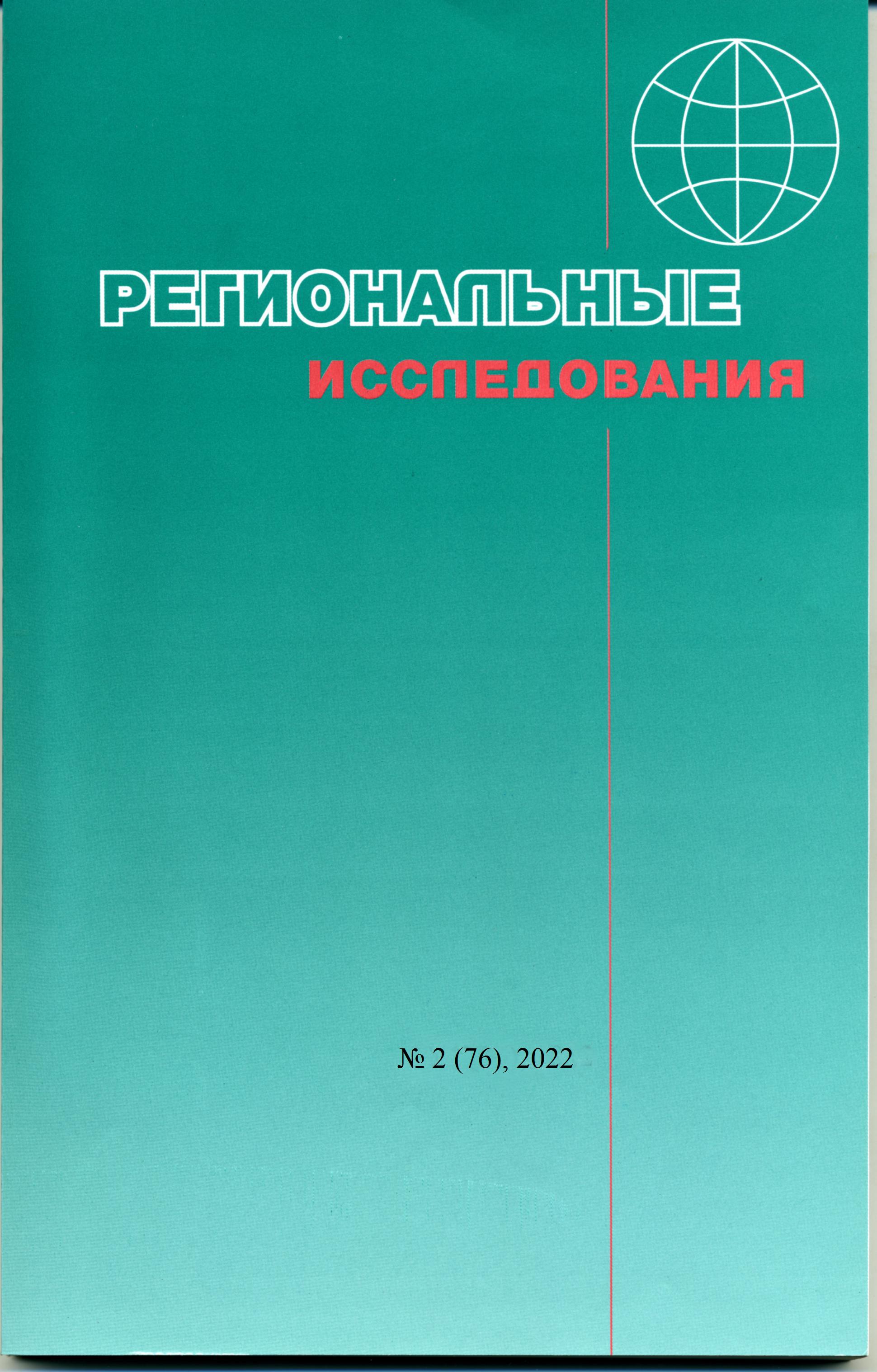Goryachko M.D., Imangulov L.R. Assessment of scrap supply zones optimality for Russian steel industry plants
DOI:
https://doi.org/10.5922/1994-5280-2022-2-4Keywords:
geography of industry, raw material zones of enterprises, ferrous metallurgy, scrap of ferrous metals, rational use of secondary resourcesAbstract
The article discusses the features of the distribution of ferrous scrap between the main metallurgical enterprises of the Russian Federation. It is revealed that the current configuration of the actual raw material zones of metallurgical enterprises of the Russian Federation is due to the uneven nature of scrap sources and end users, the export orientation of regions and the established institutional structure of regional ferrous scrap markets in the post-Soviet period. Based on the use of geoinformation technologies, the optimal configuration of raw material zones of metallurgical enterprises in the field of procurement of ferrous scrap has been determined. To assess the optimality of raw material zones of enterprises, two methods are proposed in the work – cartographic and economic. As a result of a comparative analysis of the calculation results, it was revealed that the economic method best evaluates the optimality of raw material zones in connection with the best consideration of the features of territorial schemes for the movement of ferrous scrap between producers and end consumers. According to the economic method, the metallurgical enterprises of the Ural metallurgical base have a low degree of optimality of raw material zones and, as a result, large losses in financial terms, mainly due to the extremely high concentration of metallurgical enterprises, small/medium losses have enterprises in the north, center and east of the country, where the demand for raw materials is a limited number of enterprises remote from each other. In the final part of the article, recommendations are presented to increase the economic efficiency from optimizing the distribution and the use of ferrous scrap for individual economic agents and the economy as a whole.
Thanks
The authors express their gratitude to the candidate of geographical sciences, researcher of the Department of Cartography and Geoinformatics of the Geographical Faculty of Moscow State University named after M.V. Lomonosov A.M. Karpachevsky for his help in calculating the configurations of optimal raw material zones of metallurgical enterprises of the Russian Federation.
References
Амоша А.И., Марченко В.М., Ляшенко В.И. Особенности потенциала рынка лома черных металлов для развития металлургии России и Украины // Национальные интересы: приоритеты и безопасность. 2009. № 18. С. 55–71.
Анализ состояния конкуренции на рынке лома и отходов черных металлов в РФ / отчет ФАС от 25 ноября 2019 г. 32 с. [Электр. ресурс]. URL: https://fas.gov.ru/documents/686123 (дата обращения: 05.02.2021)
Ассоциация «Национальная Саморегулируемая Организация Предприятий по Обращению с Ломом Металлов, Отходами Производства и Потребления» [Электр. ресурс]. URL: https://ruslom.com (дата обращения: 27.02.2021)
Буданов И.А. Роль рынка металлолома в решении ресурсных проблем металлургии // Проблемы прогнозирования. 2002. № 2. С. 43–57.
Годовые отчеты металлургических компаний РФ (например, ПАО «НЛМК»). URL: https://nlmk.com/ru/about/governance/regulatory-disclosure/annual-reports/ (дата обращения: 12.11.2020)
Графов А.В. Методология формирования ресурсов вторичных черных металлов и эффективность их использования: автореф. дисс. … д-ра экон. наук. М., 2011. 47 с.
Иванова Т.А., Трофимова В.Ш., Калитаев А.Н. Математическое моделирование ценового диапазона закупа лома черных металлов для металлургических предприятий // Экономика региона. 2018. № 1. С. 139–149.
Иванова Т.А., Трофимова В.Ш., Калитаев А.Н. Региональная логистика закупа лома черных металлов металлургическими предприятиями в РФ // Экономика региона. 2017. Т. 13. Вып. 1. С. 170–182.
Информационно-аналитический журнал «Металлургический бюллетень». Данные объемов потребления лома черных металлов металлургическими предприятиями РФ в 2019 г. [Электр. ресурс]. URL: https://www.metalbulletin.ru/journal/archive/ (дата обращения: 01.11.2020)
Лёш А. Географическое размещение хозяйства / Пер. с англ. Л.А. Азенштадта и др. М.: Изд-во иностр. лит., 1959. 455 с.
Лившиц Р.С. Очерки по размещению промышленности СССР. М.: Госполитиздат, 1954. 360 с.
Мазеин Н.В. Крупнейшие ареалы черной металлургии мира: иерархия и факторы размещения // Региональные исследования. 2009. № 2 (23). С. 59–73.
Мазеин Н.В. Пространственный анализ производства стали // Вестн. Моск. ун-та. Сер. 5. География. 2009. № 4. С. 34–39.
Образовалось лома и отходов металлов ЕМИСС [Электр. ресурс]. URL: https://www.fedstat.ru/indicator/33792 (дата обращения: 07.11.2020)
Петрова А.И. Формирование логистических систем товародвижения вторичных черных металлов: автореф. дисс. … канд. экон. наук. Самара, 2012. 26 с.
Расчет железнодорожного тарифа RUSLOM [Электр. ресурс]. URL: http://www.ruslom.ru (дата обращения: 05.02.2021)
Салтык И.П., Горобец Ж.А., Болохонцева Ю.И., Левченко А.В. Оптимизация сырьевого обеспечения сахарных заводов // Региональная экономика: теория и практика. 2008. № 6 (63). С. 79–93.
Тихоновская И.Д. Управление обеспечением металлургического предприятия ломом черных металлов: автореферат дисс. … канд. экон. наук. Екатеринбург, 2018. 24 с.
Тюнен И.Г. Изолированное государство / Пер. Е.А. Торнеус. М.: Экон. жизнь,1926. 326 с.
Угренинов С.В. Функционирование и взаимодействие региональных рынков лома и отходов черных металлов. Таганрог: Изд-во ЧОУ ВО ТИУиЭ, 2020. 96 с.
Хрущев А.Т. География промышленности СССР. М.: Мысль. 1986. 416 с.
Экономические показатели компаний из базы данных СПАРК-Интерфакс. [Электр. ресурс]. URL: https://spark-interfax.ru/ (дата обращения: 05.02.2021)
Яшкова Н.В. Сырьевая зона молочной промышленности: сущность и направления оптимизации // Вестник НГИЭИ. 2011. № 3 (4). С. 19–30.
Christaller W. Die zentralen Orte in Süddeutschland. Eine ökonomisch-geographische Untersuchung über die Gesetzmäßigkeit der Verbreitung und Entwicklung der Siedlungen mit städtischer Funktion. Darmstadt: Wissenschaftliche Buchgesellschaft, 1980. 342 p.
Frank Giarratani, Gene Gruver, Craig Richmond. The US Regional Ferrous Scrap Model // Trade, Networks and Hierarchies, 2002. P. 159–175.
Gene Gruver, Frank Giarratani. Modeling Geographic Ferrous Scrap Markets: Regional Prices and Interregional Transactions in the United States // Journal of Regional Science. 2005. № 45 (2). P. 313–341.
Launhardt W. Die Bestimmung des zweckmässigsten Standortes einer gewerblichen Anlage // Zeitschrift des Vereines deutscher Ingenieure. Vol. 26, 1882. P. 106–115.
Shi Yu Chen. Research on Raw Material Supply Chain Planning of Production Enterprises // Operations Research and Fuzziology. 2022. № 12 (01). P. 47–57.
Weber A. Über den Standort der Industrie. Bd. 1: Reine Theorie des Standorts. University of Toronto: Tübingen, J.C.B. Mohr (Paul Siebeck), 1922. 268 p.

